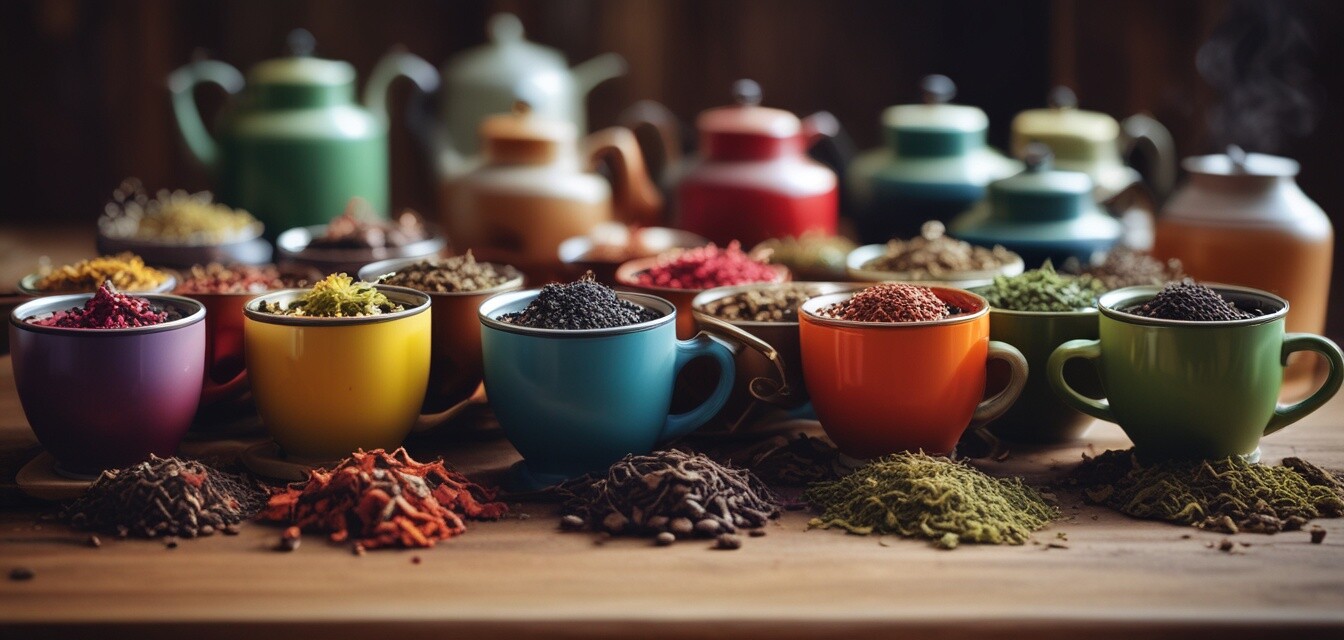
Brewing Tea for Optimal Health Benefits
Key Takeaways
- Understanding steep times and temperatures can significantly enhance the flavor and health benefits of your tea.
- Different types of tea require specific brewing techniques to unlock their optimal qualities.
- Proper storage and preparation of tea can make a big difference in the final cup.
Tea is more than just a delightful beverage; it's a journey into flavors, aromas, and potential health benefits. Understanding how to brew your tea can make all the difference in enjoying your favorite variety while extracting the most out of its health properties. In this article, we delve into the best brewing practices for various types of tea and provide guidelines for steep times and temperatures to help you enjoy a perfect cup every time.
The importance of brewing techniques
Brewing tea properly unlocks the essential oils, flavors, and health benefits contained in the leaves. Whether it's fragrant green tea or robust black tea, the correct technique enhances your experience. Below, you will find insights into the various types of tea, their recommended brewing practices, and what to keep in mind for optimal results.
Types of tea and their brewing requirements
| Type of Tea | Recommended Temperature | Steep Time | Notes |
|---|---|---|---|
| Black Tea | 200°F (93°C) | 3-5 minutes | Best enjoyed with no milk or sweeteners for maximum flavor. |
| Green Tea | 160-180°F (70-80°C) | 2-3 minutes | Watch steeping time; can become bitter if oversteeped. |
| Herbal Tea | 200°F (93°C) | 5-7 minutes | Great for infusion; can be steeped longer for stronger flavors. |
| Oolong Tea | 190°F (88°C) | 3-5 minutes | Can be steeped multiple times, enhancing complex flavors. |
| White Tea | 160-185°F (70-85°C) | 4-5 minutes | Delicate; should be steeped gently to preserve its nuance. |
Best practices for tea brewing
To truly master the art of tea brewing, consider the following best practices:
- Use good quality tea: Fresh, high-quality tea leaves contribute significantly to the flavor and health benefits.
- Measure your tea: One teaspoon of loose tea per cup is a good guideline for brewing.
- Use filtered water: The quality of water can affect the taste of your tea. Always opt for fresh, clean water.
- Preheat your teapot: Rinsing your teapot with hot water can help maintain the temperature during brewing.
- Timing is crucial: Set a timer to ensure you don't over or under-steep your tea.
- Store tea properly: Keep your tea leaves in a cool, dry place away from sunlight for maximum freshness.
Common mistakes to avoid
- Using water that is too hot or too cold can ruin your tea.
- Not measuring the tea leaves can lead to weak or overly strong brews.
- Ignoring steep times can result in bitterness or lack of flavor.
- Reusing old leaves without proper storage can lead to stale tasting tea.
Special brewing methods around the world
Beyond the typical methods of brewing, every culture has unique ways to enjoy tea. Here are a few special brewing techniques:
Unique brewing traditions
- Chinese Gongfu Tea Ceremony: A meticulous method involving multiple shorter steeps to extract all the flavors from the leaves.
- Japanese Tea Ceremony: Focuses on the ritual of preparing matcha, emphasizing mindfulness and aesthetics.
- Turkish Tea Brewing: Uses a double teapot system (çaydanlık) allowing for strong tea combined with hot water.
Conclusion
Whether you're brewing a black tea for a morning boost or a soothing herbal infusion in the evening, understanding the specifics of each type of tea can enhance your experience. By using the correct temperatures, steep times, and techniques, you'll ensure that your cup of tea is not only flavorful but also maximally beneficial. For more tea insights, consider exploring our tea buying guides, or learn more about tea brewing techniques that can elevate your enjoyment further!
Pros
- Enhances flavor and aroma of tea.
- Maximizes potential health benefits.
- Simple techniques make it accessible to everyone.
Cons
- Requires attention to detail for best results.
- Some teas can be sensitive to overstepping.